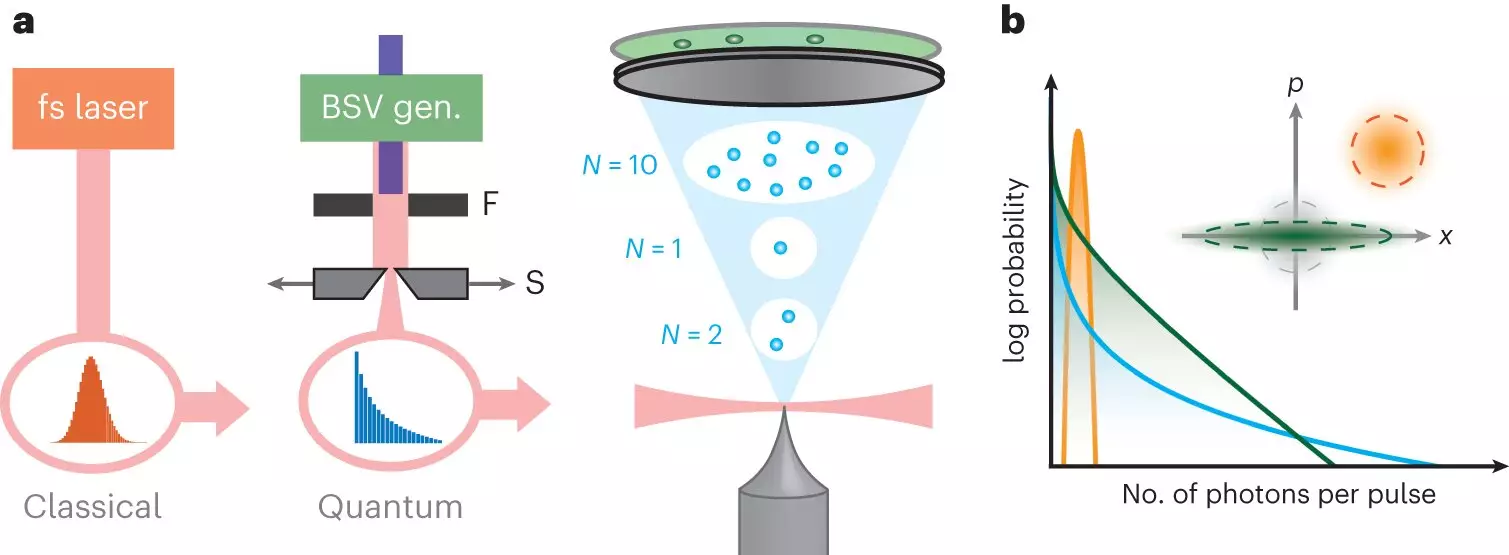Strong field quantum optics is a rapidly evolving area of research that combines aspects of non-linear photoemission based on strong field physics with the well-established field of quantum optics. While the behavior of light particles has been extensively studied in both classical and non-classical light sources, the impact of these light particle distributions on photoemission processes remains unclear. Recently, researchers at Friedrich-Alexander-Universität Erlangen-Nürnberg (FAU) and the Max Planck Institute for the Science of Light delved into this gap in knowledge by investigating the interactions between light and matter using a non-classical light source. Their groundbreaking paper, published in Nature Physics, sheds light on how photon statistics from the driving light source are mirrored in the electron number statistics of emitted electrons from metal needle tips, suggesting exciting implications for the future of optical devices.
The primary aim of the study conducted by Heimerl and his colleagues was to explore how quantum light from non-classical sources engages with matter, a realm that has only been explored using classical light sources thus far. By collaborating with world-renowned experts in the field of non-classical light like Professor Maria Chekhova and Ido Kaminer, the researchers sought to investigate electron emission driven by non-classical light sources. This interdisciplinary approach brought together the expertise of strong field physics with quantum optics, leading to significant discoveries in the realm of quantum light-matter interactions.
The experimental setup involved using a non-classical light source to stimulate a photoemission process from a tiny metal needle tip, akin to the photoelectric effect famously studied by Einstein but with an added dimension of extreme intensities and fluctuations within each laser pulse. By comparing the electron counts for both classical and non-classical light sources, the researchers were able to demonstrate a direct correlation between the number of electrons emitted and the characteristics of the driving light. This observation opens up new possibilities for tailoring electron emission to specific applications, particularly in the realm of imaging biological molecules where minimizing electron damage is crucial.
The findings from this research have far-reaching implications for applications in imaging, sensing, and strong-field optics where the interaction between quantum light and electrons plays a pivotal role. By showcasing the potential to modulate electron numbers based on specific photon distributions, the study paves the way for future innovations in the field of strong field quantum optics. Moreover, the ability to imprint reduced noise photon distributions onto electrons presents an exciting avenue for further exploration and potential breakthroughs in this burgeoning field of research.
The fusion of strong field quantum optics with quantum light sources represents a new frontier in scientific inquiry, offering endless possibilities for advancements in technology and theoretical understanding. As researchers continue to unravel the complexities of light-matter interactions at the quantum level, we can anticipate groundbreaking discoveries that will reshape our understanding of the fundamental principles governing the universe. The journey towards harnessing the full potential of strong field quantum optics has just begun, promising a future filled with innovation and discovery.



Leave a Reply